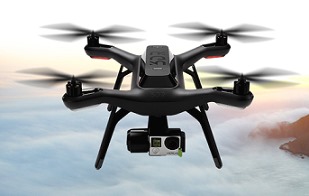Phase advance (other terms: timing adjustment, field weakening)
To compensate for the current lagging behind the voltage at high speeds because of inductance or to get a bit higher top speed at the expense of some efficiency and torque, phase advance can be used. It is implemented in a speed-dependent way so that the motor gets more phase advance the faster it spins. It is implemented this way because having phase advance at low speeds does not give any improvements at all as far as I know, so the best way is to increase the effect as the motor increases its speed. BR ERPM is the electrical RPM of the motor at which the set phase advance is used, and Integrator limit scale at BR ERPM (will rename this option soon…) is the amount of phase advance to use. Setting it to 1.0 gives no phase advance and setting it to 0.0 gives 30 degrees (maximum) phase advance. The set phase advance will be mapped linearly between 0 ERPM and BR ERPM. If you don’t know what this is, you can leave the default options since it is not that important.
인덕턴스로 인해서 고속에서 전압 뒤로 전류의 지연을 보상하기 위해서 혹은 다소 효율과 토크의 희생으로 최고 속도 이상으로 동작시키기 위해서 phase advance가 사용됩니다. 이는 속도에 의존적인 방식으로 구현됩니다. 그 결과 모터를 phase advance를 더 주어 더 빠르게 회전할 시킬 수 있습니다. 낮은 속도에서 phase advance를 시키는 것은 제가 아는 한 전혀 어떤 개선을 주지 못하기 때문에 이런 방식으로 구현됩니다. 그래서 가장 좋은 방법은 모터가 속도가 증가할수록 이 효과를 증대시키는 것입니다. BR ERPM은 설정된 phase advance가 사용되는 지점에서 모터의 전기적 RPM이고, BR ERPM(이 옵션의 이름이 곧 변경될 것입니다...)에서 Integrator limit scale은 사용하는 phase advance의 양입니다. 이것을 1.0으로 설정하는 것은 어떠한 phase advance를 주지 않습니다 그리고 이를 0.0으로 설정하는 것은 30 degree (최대) phase advance를 주는 것입니다. 설정된 phase advance는 선형적으로 0 ERPM과 BR ERPM 사이에 매핑될 것입니다. 만일 여러분이 이것이 무엇인지 모른다면 여러분은 이것이 그렇게 중요하지 않기 때문에 디폴트 옵션으로 남겨둘 수 있습니다.
MOTOR
Current, temperature, RPM and voltage-limits can be configured depending on your application.
전류, 온도, RPM 그리고 voltage-limits은 여러분의 애플리케이션에 따라 설정될 수 있습니다.
Note: These limits are not foolproof. If you set them too high, you can damage the ESC and/or the motor.
Note: 이들 제한들은 fool proof가 아닙니다. 여러분이 이들은 너무 높게 설정하면 여러분은 ESC 그리고/혹은 모터를 손상시킬 수 있습니다.
Current
Separate limits for acceleration and braking current.
Separate limits for motor and battery currents.
"Absolute max" is checked in every PWM switching cycle and used in case the soft back-off strategy for the other limits doesn’t work. I usually set it way higher than the other limits because soft back-off is preferred rather than switching off the motor with a fault code, but it should never be higher than 150A.
"Absolute max"는 매 PWM 스위칭에서 체크하며 경우에 따라서 다른 제한들에 대해서 soft back-off 전략이 동작하지 않을 때 사용됩니다. 저는 보통 다른 제한들보다 높은 방식으로 설정합니다. 왜냐하면 soft back-off은 디폴트 코드로 모터의 스위칭을 끄는 것보다 오히려 선호하기 때문입니다. 그러나 이는 절대 150A 보다 높지 않아야만 합니다.
The "Slow absolute max" box will make sure that a filtered version of the maximum current limit is used. This is useful if there is much noise and that fault code kicks in all the time. I usually have it ticked.
"Slow absolute max" 박스는 최대 전류 제한의 필터된 버젼이 사용되는지 확실하게 합니다. 이것은 만약 너무 많은 잡음이 있거나 그 디폴트 코드가 항상 kick in 될때 유용합니다. 저는 보통 이것을 체크합니다.
Temperature
At the "Start" temperature, the current will become more and more limited linearly until the “End” temperature, where the output is switched off completely. Setting them about 20 degrees apart will make the ESC slowly decrease the maximum output current as it gets too warm instead of abruptly switching everything off.
"Start" 온도에서 전류는 "End" 온도까지 선형적으로 더욱더 제한될 것입니다. 여기서 출력은 완전히 스위치가 off됩니다. 이를 약 20도 정도 차이를 두어 설정하는 것이 ESC가 너무 상승할 때 온도가 갑자기 모든 것을 스위치 off 시키는 것 대신에 최대 출력 전류를 서서히 감소시키게 만들 것입니다.
MOSFET temps (on the ESC) are implemented and working, but motor temps are not implemented yet. They will require an external temperature sensor in the motor. The software implementation is rather simple since I can just copy most of the MOSFET temperature limit code.
MOSFET 온도(ESC 상에)는 구현되었고 동작합니다. 그러나 모터 온도는 아직 구현되지 않았습니다. 이들은 모터에 외부 온도 센서를 필요로 할 것입니다. 소프트웨어 구현은 오히려 간단한데 왜냐하면 저는 단지 MOSFET 온도 제한 코드의 대부분을 복사하기 때문입니다.
RPM
Max and Min ERPM are hard RPM limits. It is preferable to use the soft application RPM limits instead if possible.
Max와 Min ERPM는 엄격한 RPM 제한입니다. 만일 가능하다면 부드러운 애플리케이션 RPM 제한을 사용하는 것을 선호합니다.
"Max ERPM at full brake" (should change the name…) is the highest opposing RPM at which a direction change is allowed. Setting this too high will cause cogging when moving in one direction and giving high throttle in the other direction. On my longboard I have it at 300 and my RC car has it a bit higher.
"Max ERPM at full brake"(이름을 변경해야 하는...)는 방향 전환이 허용되어진 곳에서 가장 큰 반대되는 RPM입니다. 이를 너무 높게 설정하는 것은 한 방향으로 움직일때 그리고 다른 방향으로 높은 스로틀을 줄 때 코깅을 야기시킬 것입니다. 제 longboard에서는 저는 300이고 제 RC 카에서는 조금 높습니다. 여기서 코깅(Cogging)이란 모터의 회전자와 고정자가 덜거덕 거리면서 움직이는 것을 말합니다. 즉, 토크의 변동을 의미합니다. 이를 줄이기 위해서 철심의 슬롯 수를 늘리면 됩니다. 또 슬롯 수가 작은 경우에는 슬롯에 비틀림을 주어 자속분포를 균등하게 만드는 등의 방법이 있지만 이 경우에는 출력토크가 저하됩니다. 이를 완전히 개선한 것이 코어리스 모터이지만 기계적으로 약하여 불안정하므로 대형으로 만들 수 없기 때문에 고정밀도기계, 에너지 절약 장치 등에 활용하게 됩니다.
"Max ERPM at full brake in CC mode" is the highest RPM at which applying full brake by shorting all the motor windings is allowed. Setting this value too high can cause much mechanical stress in some circumstances. I have it at 1500 for all my applications.
"Max ERPM at full brake in CC mode"은 모터의 모든 코일을 단락시키는 full brake를 적용하는 것이 허용된 시점에서 최대 RPM입니다. 이 값을 너무 높게 설정하는 것은 어떠한 환경에서 많은 기계적 스트레스를 야기시킬 수 있습니다. 저는 이를 모든 제 애플리케이션에서 약 1500 정도를 설정합니다.
Voltage
The minimum and maximum input voltage.
NOTE: I changed the voltage dividers in hardware 2015-01-22. If you have built the PCB before that, the maximum voltage can’t be more than 52V. The difference is whether the PCB has 33k or 39k resistors. 33k means that maximum 52V can be measured. The latest PCBs (with 39k resistors) can measure 60V, but you should have some margin on your supply voltage to be safe. You can of course replace all 33k resistors with 39k and measure up to 60V.
NOTE: 저는 2015-01-22 하드웨어에서 전압 분배회로를 변경했습니다. 만일 여러분이 그 전에 PCB를 제작하였다면 최대 전압은 52V 이상이 될 수 없습니다. 차이는 PCB가 33k를 가졌는지 39k 저항을 가졌는지 입니다. 33k는 최대 52V가 측정될 수 있슴을 의미합니다. 가장 최근 PCB(39k 저항을 갖는)는 60V를 측정할 수 있습니다. 그러나 여러분은 안전을 위해서 여러분의 전원 공급 전압에 약간을 여유를 가져야만 합니다. 여러분은 물론 33k 저항을 39k 저항으로 교체할 수 있고 60V까지 측정할 수 있습니다.
Once the ESC is configured for your motor, you can use the up and down arrow keys to run the motor forwards or reverse in current control mode, or the right and left arrow keys to run the motor forwards and reverse in duty cycle mode. The buttons in the right-hand side of the GUI can also be used.
일단 ESC가 여러분의 모터를 설정하고 나면, 여러분은 current control mode에서 모터를 정방향 혹은 역방향으로 동작시키기 위해서 up, down 화살표 키를 사용할 수 있고, duty cycle mode에서 모터를 정방향 그리고 역방향으로 동작시키기 위해서 right, left 화살표 키를 사용할 수 있습니다. GUI의 우측편에 버튼들을 또한 사용할 수 있습니다.
MISC
Here are the rest of the motor configuration parameters. You probably want to experiment with Startup boost if you are using current control. The rest of the parameters can be left as their default values unless you have some specific reason to change them.
여기는 모터 설정 파라미터의 나머지입니다. 여러분은 아마도 여러분이 전류 제어를 사용한다면 Startup boost와 함께 실험을 원할 수도 있습니다. 나머지 파라미터들은 여러분이 변경할 특별한 이유가 없는 한 디폴트 값으로 남겨둘 수 있습니다.
PWM mode
Synchronous is recommended and the best choice for a majority of all motors. If you have some weird motor, Bipolar could work better, but it probably won’t. Nonsynchronous is only for experimentation and can kill the ESC if you are unlucky.
동기화가 추천되며 모든 모터들의 대다수를 위한 가장 좋은 선택입니다. 만일 여러분이 weird 모터를 갖고 있다면 Bipolar가 잘 동작할 수 있습니다. 그러나 이것은 아마도 아닐 것입니다. 비동기화는 단지 실험용이고 여러분이 불행하다면 ESC를 손상시킬 수 있습니다.
Current control
Startup boost is the minimum duty cycle to use when using current control. If the motor is to weak when you are just starting, you can increase this parameter a bit until it feels right. The range is 0.0 to 1.0, where 1.0 is full throttle (which you shouldn’t use.). A sane range is up to 0.15 or so.
Startup boost는 전류 제어를 사용할 때 사용을 위한 최소 듀티 싸이클입니다. 여러분이 단지 start할때 만약 모터가 약하다면 여러분은 이 파라미터를 약간 좋다고 느낄 때까지 증가시킬 수 있습니다. 범위는 0.0 ~ 1.0입니다. 여기서 1.0은 full 스로틀입니다(여러분은 사용하지 말아야 합니다). 정상적인 범위는 0.15 정도입니다.
Min current is the minimum allowed current. There should be no reason to change this, so leave it at the default value.
Min current는 최소 허용된 전류입니다. 이를 변경하기 위한 어떤 이유도 존재하지 않습니다. 그러므로 디폴트 값으로 남겨 두세요.
Control gain is the gain used by the current controller. Increasing it makes the current response faster, but also increases the risk of getting an unstable system where the ESC can get damaged. Only change this if you know what you are doing.
Control gain은 전류 제어기에서 사용된 이득입니다. 이를 올리는 것은 전류 응답을 빠르게 합니다. 그러나 또한 불완정한 시스템을 갖는 위험도가 늘어나고 ESC가 손상될 수도 있습니다. 만일 여러분이 무엇을 하는지 알 때만 오직 변경하세요.
Speed control
The PID parameters for the speed controller. Only change them if you know what you are doing.
속도 제어기를 위한 PID 파라미터입니다. 여러분이 무엇을 하는지 알 때에 오직 변경하세요.
Timeouts
Fault stop time is the amount of milliseconds that the ESC should be completely switched of when a fault code arises. After that time, it will switch on and try to listen for commands again.
Fault stop time는 결함있는 코드가 발생했을 때 ESC가 완전하게 스위칭 off 해야만 하는 ms의 양입니다. 그 후에 이것은 스위칭 on 할 것이고 명령어를 다시 듣기 시도할 것입니다.
'Flight Controller 이해 > 전자속도제어기(ESC)' 카테고리의 다른 글
| VESC - Open Source ESC(8) (0) | 2018.01.07 |
|---|---|
| VESC - Open Source ESC(7) (0) | 2018.01.07 |
| Communicating with the VESC using UART (1) | 2018.01.05 |
| Startup torque on sensorless BLDC motors (0) | 2018.01.03 |
| Qt에서 bldc-tool 컴파일 방법 (0) | 2017.12.24 |




